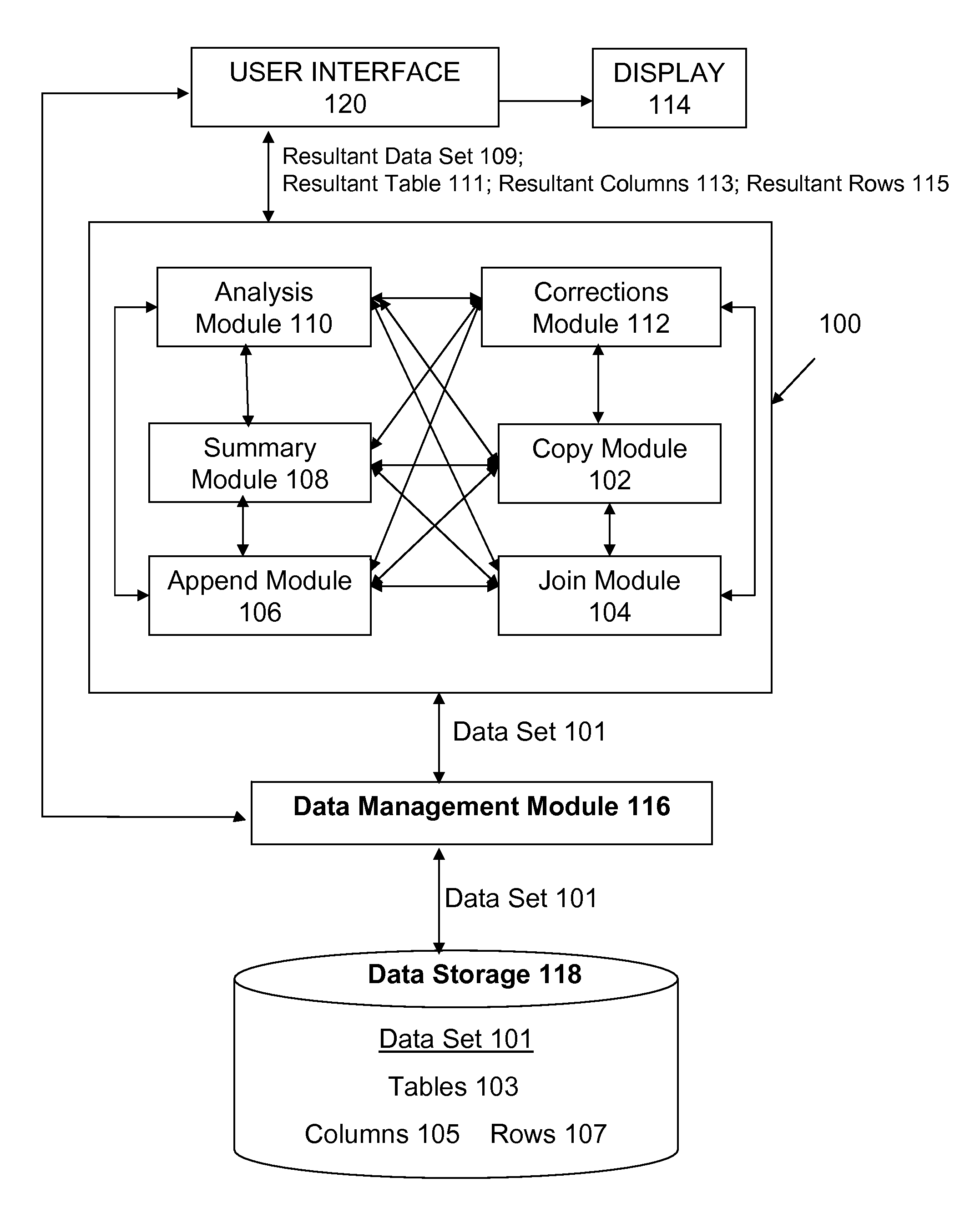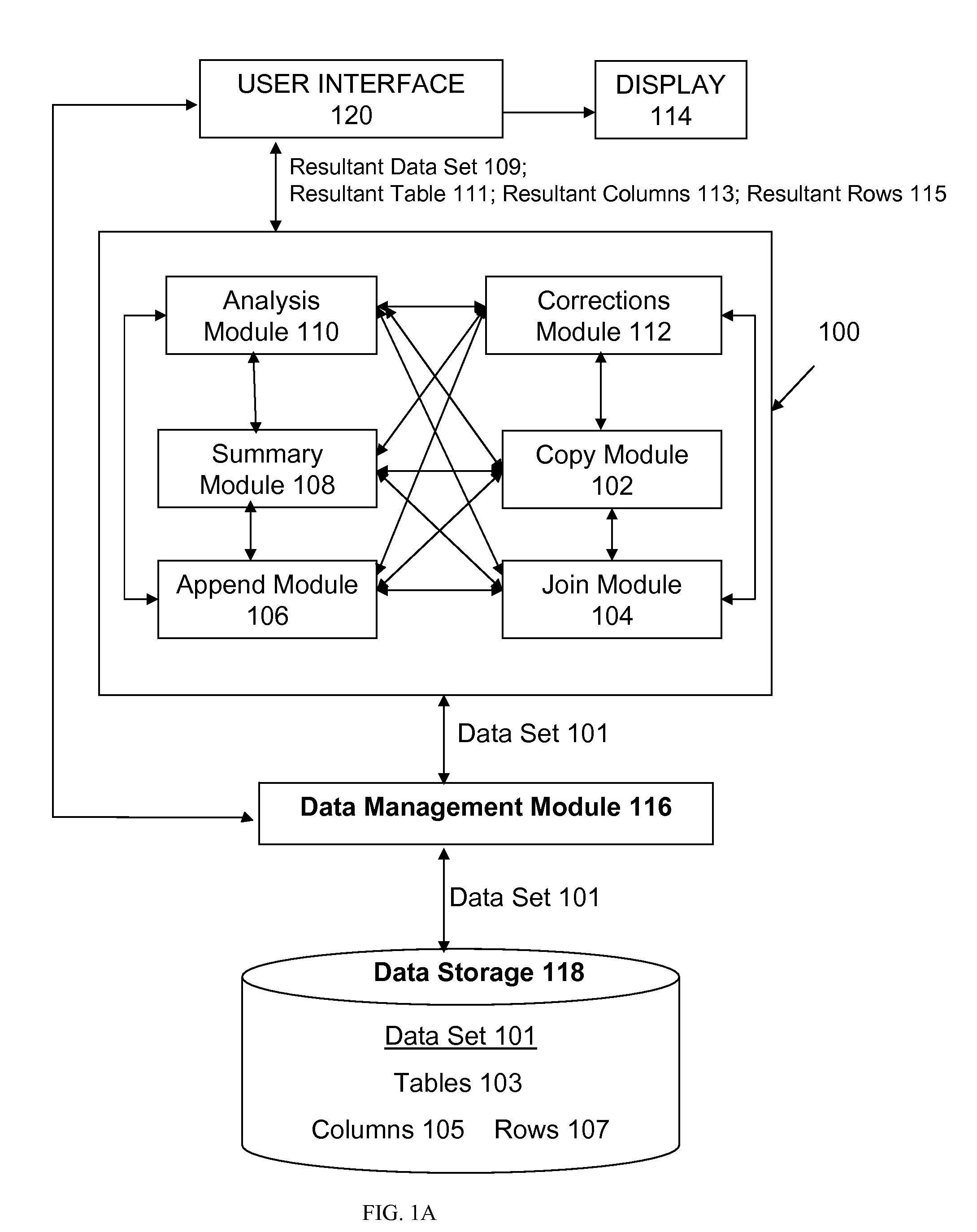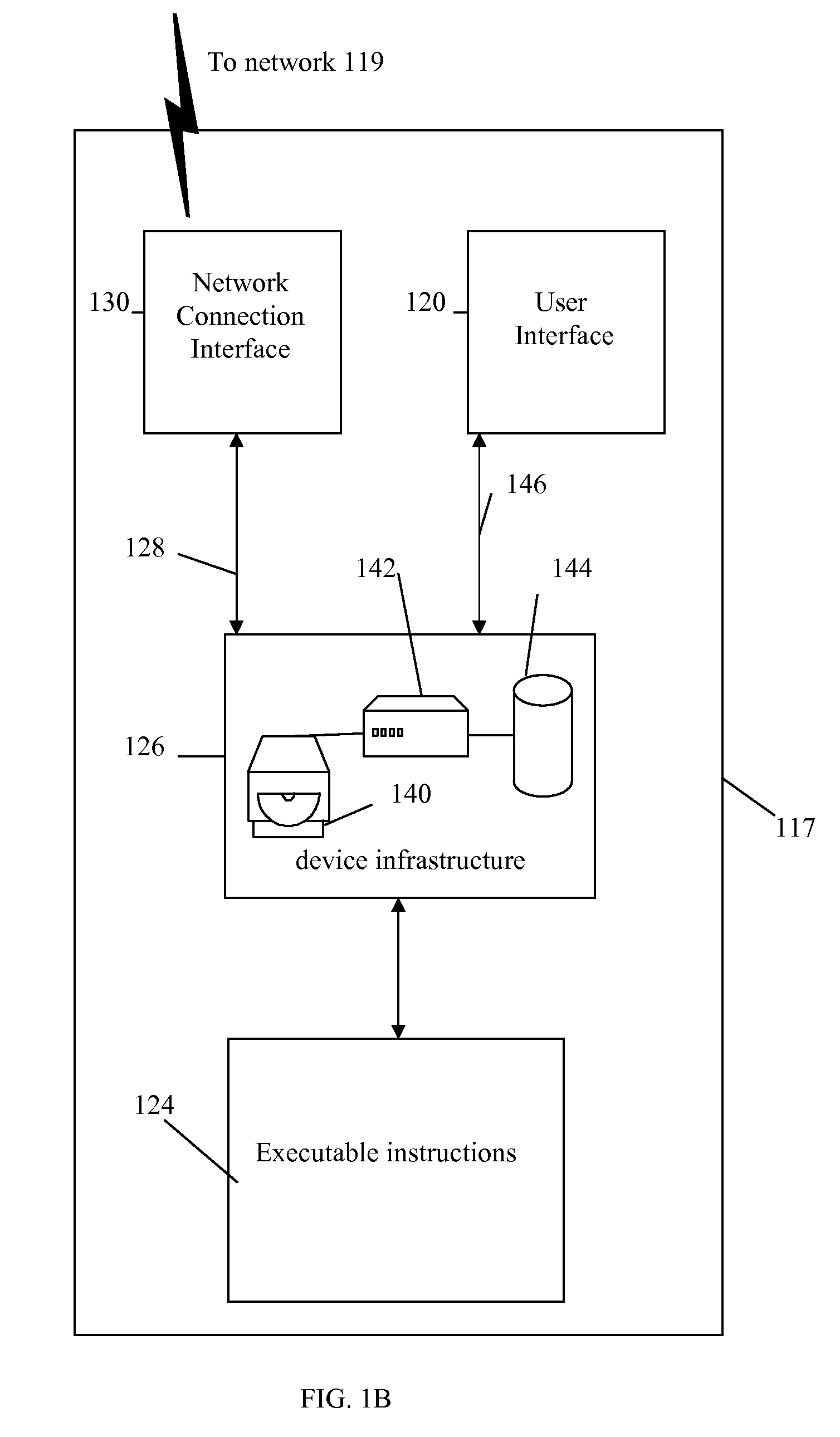Method and System for Data Analysis
a data analysis and data technology, applied in the field of data analysis methods and systems, can solve the problems of difficult to keep track of such corrections and ensure that they remain in place, disadvantageous manual cleaning and restructure of data, and limited capabilities, etc., to facilitate the operation of these operations
- Summary
- Abstract
- Description
- Claims
- Application Information
AI Technical Summary
Benefits of technology
Problems solved by technology
Method used
Image
Examples
Embodiment Construction
Data Analysis System 100
[0052]For convenience, like reference numerals in the description refer to like structures in the drawings. Referring to FIG. 1A, shown is an embodiment of a data analysis system, indicated generally by the numeral 100. The data analysis system 100 is configured for facilitating restructuring of data such as joining rows from different tables, cleaning of data such as to remove discrepancies and redundancies with the data, correction such as allowing a user to correct data while keeping track of corrections, and analysis of data such as to provide graphical analysis. As described earlier, the data received by the data analysis system 100 may receive dirty data that includes redundancies and other discrepancies within the data. The data analysis system 100 receives a data set 101 from a data management module 116. The data management module 116 interacts with and receives the data set 101 from a data storage 118 for subsequent manipulation by the data analysis...
PUM
 Login to View More
Login to View More Abstract
Description
Claims
Application Information
 Login to View More
Login to View More - R&D
- Intellectual Property
- Life Sciences
- Materials
- Tech Scout
- Unparalleled Data Quality
- Higher Quality Content
- 60% Fewer Hallucinations
Browse by: Latest US Patents, China's latest patents, Technical Efficacy Thesaurus, Application Domain, Technology Topic, Popular Technical Reports.
© 2025 PatSnap. All rights reserved.Legal|Privacy policy|Modern Slavery Act Transparency Statement|Sitemap|About US| Contact US: help@patsnap.com



